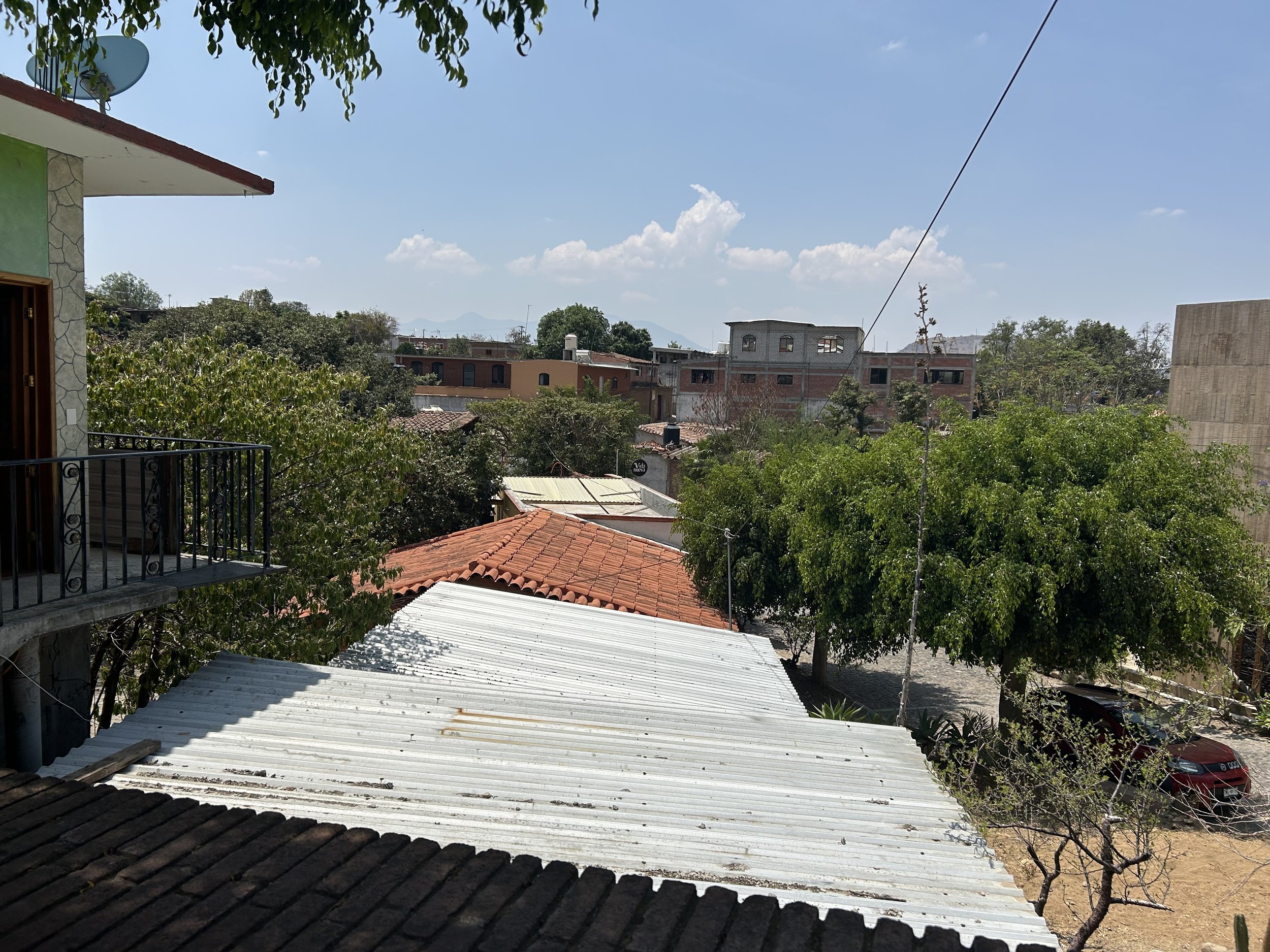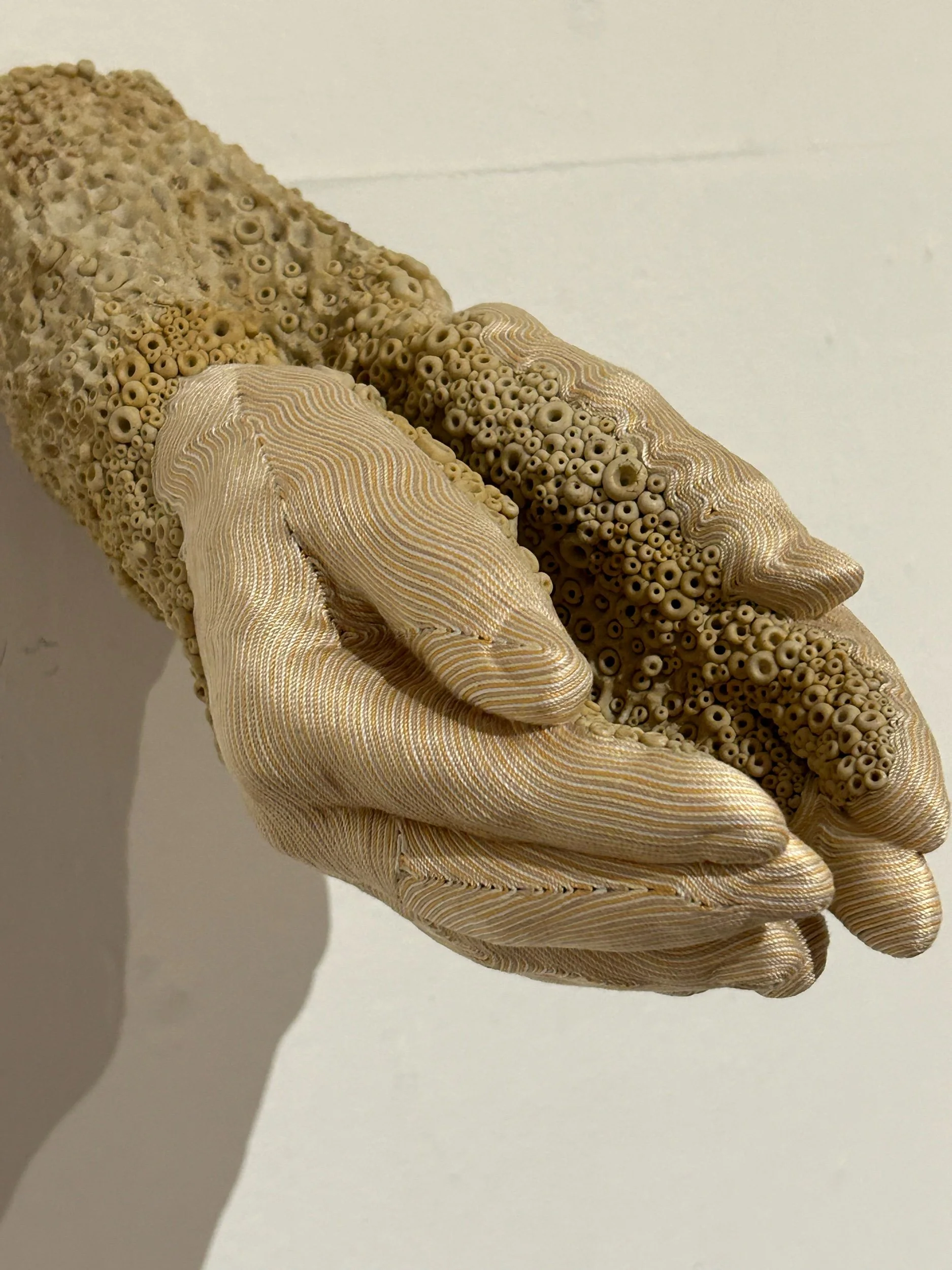Teotitlán del Valle
Every week we take a visit to see something directly related to our study/ practice. Last week we went to Teotitlán del Valle where they are known for their woven rugs (Mostly Zapotec and Mixteca styles).
Before we did anything, we did a quick walk around to see the town. It’s gorgeous. Cobblestones. Quiet. Views. Looms everywhere.
There was even a small archeological site that was discovered during a construction project.
After the walk we went La casa de la familia Mendoza. Fermina was our host.
The first thing that happened was that we received a small demo on how they spin their yarn. They use wool that they get from local sheep.
She said they card the wool about 20 times. Then she just removed the wool from the carders and folded them over. (No rolling)
Instead of rolling the wool, after she folded it in half, she just tore it down the middle. And then attached it to the loose end of the yarn on the wheel.
After the demo she explained how they dye the yarn for weaving.
They start with primary colors (red- cochineal, yellow- marush, and blue- añil). After which they either use modifiers (lime, calcium hydroxide, sodium bicarbonate, cream of tartar, and ash)* or do an over dye with another color. If they choose the color of wool depending on which colors they want as an end result. Dark wool for dark/ Black colors, light wool for light/ bright colors.
*I was also told you can use honey
Here she showed how they use cochineal to first get red, then modify it for orange and purple. She also explained how the exportation of cochineal is causing the costs to go up for them and that often it’s too expensive.
This is where I get on my soapbox real quick:
Ahem. (Clears throat) For many the purpose of using natural dyes is that it’s cleaner and more ethical than synthetic dyes. But that can’t be the case if you’re purchasing a bunch of dyes that you wouldn’t otherwise have access to in your area. However the point of natural dyes is to be able to use the things you have access to. Either food scraps, things you grow, things you buy locally (at farmers’ market/, etc), or things you forage. Currently we’re depleting the resources of our indigenous communities. This is colonization. This is exploitation.
End rant.
It was such a cool and educational experience. I can’t wait to see where else we go!
Note: I’ve decided that instead of making the blog part of the paid membership area, I want it to be accessible. But I will be adding an option for folks to be able to donate to my practice at the bottom of each blog post. Being an artist requires so much time and money, of which we usually have neither. So community support is essential to our progress as artists. Thank you so much for being here.

















